- Home
- Orson Scott Card
Ender's World Page 10
Ender's World Read online
Page 10
Orson Scott Card favored this last one in his famous futuristic fairy tale, Ender’s Game, but it is not only Ender who gets the chance to have his soul (or his perception of it) reflected back from the mirror’s depths. As the mirror at the End of the Universe shows the game player his inner demons, so too does Ender’s Game itself act as a magic mirror, revealing facets of the Enderverse characters inside each of us.
For we are all characters in the tales of our own lives, are we not? We begin in life as the characters of a story begin: unblemished, untried, and unknowing. We make choices—and mistakes—and we learn from them. And when we are lucky enough to discover characters in literature who are like ourselves, we can look at the choices and mistakes they make and learn from those, too. This was the origin of many a fairy story: to warn us of our follies and the dangers of life through hyperbolic example.
As spectacular as Peter, Valentine, Ender, and Bean are, with their mental abilities and special talents, at the core of each of them is a human child with a human heart…just like us. They are identifiable and sympathetic and personal. And the extremes to which these characters are pushed, and to which they push themselves, force the reader to question his or her own stamina, willingness, and drive.
Ender
“The most noble title that any child can have is Third.”
—DEMOSTHENES
Ender Wiggin is, unsurprisingly, the Hero of the piece.
From the Brothers Grimm to Joseph Campbell, the fairy-tale hero is the quintessential main character. The stakes are high and the odds are against him, but he’s resourceful (and stubborn) enough to make it through each challenge, all the way to the end. Sometimes he is the Chosen One, with a destiny he must fulfill. Sometimes he is Jack, the everyman who sets out to find his fortune, usually because his home life is no longer welcoming and he has no choice. In either case, he must conquer the giant, defeat the enemy, and find peace in this world…or some other sort of happy ending. With no guide (and often no parents), he must master his fears and best his foes through his own efforts.
Ender is special—a Third. He carries the weight of the whole world’s hope on his shoulders even before his birth. There is a task that only he can perform, and he must leave behind his home and everything he knew to do it. But he is also just an ordinary boy, thrust into extraordinary circumstances, and forced to do the best he can.
Ender is the face we all see in the mirror at one time or another. We have all felt the burden of expectation, whether our own or someone else’s. This is particularly true of gifted children. In Ender’s world, gifted children are given monitors and sent to Battle School. They are expected to save Earth from the formics. In our world, gifted children are singled out by simply being labeled gifted and subsequently burdened with all the baggage that comes with it: the expectation that they will always do a perfect job, without ever screwing up, and that the solutions to problems will come to them easily, every time.
Ender did not choose his abilities. He did not choose to bear the burden of so many hopes and dreams. But that doesn’t absolve him of the responsibility to choose what he does with those abilities and those expectations. What Ender does with the hand he is dealt is up to him.
We all sometimes find ourselves stuck in the middle of difficult choices, forced to select the lesser of two evils. We make important choices every day that change the course of our lives, sometimes taking us down dark and dangerous paths with no turning back. Our fate, like Ender’s, is in our own hands. We have to learn the rules and play the game so we know how to beat it. It’s up to us to populate the long-retired army colors, climb to the top of the leaderboards, and fight our way through to the End of the World.
Bean
“I can be the best man you’ve got, but don’t play games with me.”
—BEAN
Bean is the Trickster of the Enderverse.
The Trickster is the hero of his fairy tales, but he is not an obvious hero due to some handicap: his size, his age, his social status, or his financial situation. The Trickster is an outsider whose thoughts and motivations may not be readily clear to the average person. He is a catalyst for change. He may not have brute strength, but he is smarter and quicker and more resourceful than those he must face. Often, he is not fully human. He is the Clever Tailor, who frightens giants by stitching misleading information onto his belt. He is the wise fox who can turn a silly boy into a Count. He is Tom Thumb, a tiny man born from a wish, who never lets his own stature dictate the size of his adventures.
Ender is incredibly intelligent, but at his core, he is still a very human child. Bean is über-human by design, Frankenstein’s monster, an odd duck from his creation, long before he ever got to outer space. Bean is intense and internal. He’s the quiet one who sits back and completely thinks out the situation and the people in the situation and the possible outcomes of the situation before he ever says a word… if he even decides to speak. Everything he does has a reason or angle behind it. Emotions confuse him. He teaches himself to respond emotionally when it is expected in a social situation, not when he’s actually feeling anything. If he feels anything at all.
And yet, the feelings of being smarter or better or more special, of being different, of being apart from others, are feelings that are all too human. They’re quirks shared by any outcast misfit on the fringes of the social order. They are the qualities of the physically handicapped who still maintain every bit of their mental faculties. They are also the main characteristics of autism spectrum disorders (ASDs) like Asperger’s, which is frequently linked with creative genius (luminaries such as Isaac Newton, Albert Einstein, Mozart, and even fairy-tale scribe Hans Christian Andersen showed signs of a variety of ASDs).
Bean as Trickster is representative of our shortcomings—be those physical, environmental, or developmental—and of our ability to overcome those obstacles using our wit, resourcefulness, and ability to adapt. Through Bean’s story we see that, even if we are at the fringes of society, we too have the ability not just to survive but thrive when faced with such adversity, so long as we keep our wits about us.
Valentine
“You’re his monitor now. You better watch him night and day. You better be there.”
—PETER
Valentine is in many ways the fairy-tale Princess of Ender’s Game; she is—as implied by her name—the heart of both Ender’s Game and Ender himself.
It’s one thing for a pure-hearted peasant girl to become a princess by catching a prince’s eye (from, say, the top of a tower) or by performing some sort of task (like spinning straw into gold), but kind and gentle princesses in fairy tales who are born to the role seem to have a far more unfortunate lot in life. In most stories, this princess’s power—her position, her self-esteem, her rights as a woman—is taken away from her. Briar Rose is cursed before she is old enough to walk or talk, the Goose Girl is forced to switch places with her scheming maid, and Snow White is sent off to be killed by a huntsman. Sometimes the princess gets her power back and finds justice and a happy ending. Sometimes she doesn’t.
How easy it is to see Valentine in these roles. Kind and gentle Valentine is always loving but always having her power usurped and stolen away from her. Her generous nature is swept up in Peter’s political machinations, his dominant personality running roughshod over her wants and needs—though clever Valentine still finds ways to be subversive… as wise and witty (and stubborn) Princesses do.
Valentine’s role can also be seen as the Fairy Godmother, protector, guiding Ender back from dark paths. In fairy tales, she would be the mother on whose grave grows the magic tree from which the birds toss Cinderella her dresses of gold and silver. The mother who gives her handkerchief to the Goose Girl with three drops of her blood on it, to guard her. Valentine protects Ender from Peter after his monitor is removed. She pulls Ender back from the edge with her Graff-imposed letter to him at Battle School. Most importantly, she is the glue that keeps Ender from coming apart at the
psychological seams.
Valentine’s heart is her weakness, but it is also her strength. Those of us who look into the mirror and see Valentine should value that strength at the same time we polish our armor, to protect not just others but also ourselves from those who would take our power away.
Peter
“You’re not the smartest, Peter, just the biggest.”
—VALENTINE
Ah, Peter, the Wicked King.
Peter begins his life in Ender’s Game as the boy in fairy tales destined for greatness through hard work. He is the eldest son, the prince destined to rule the kingdom after his father. He is a natural leader, aware from a very young age of his privilege and his responsibilities.
In all of these ways, Peter Wiggin fits the criteria. He is the oldest of the Wiggin siblings, and his intelligence is on par with Valentine and Ender’s. And though he eventually becomes, as the Hegemon, a good leader (or so we are told), the young Peter’s loyalty is not to others but to himself. So instead of being a Prince Charming, Peter steps sideways into the role of the Wicked King—the male version of the Evil Stepmother.
The Wicked King uses others as pawns, always twelve steps ahead but only concerned with how events ultimately benefit himself and his goals. (When they launched their secret identities as Demosthenes and Locke, Valentine might have believed that there was still “a long way between writing a newsnet column and ruling the world,” but in his mind, Peter was already Hegemon.) The Wicked King acts from jealousy, as Peter does from jealousy of Ender, and uses his authority selfishly, for both greater power and revenge.
Each of us experiences a taste of our own power at some point, as well as the knowledge that the potential for darkness lies within us. It’s important to be aware of our own power. But it is just as important to be aware of our potential to abuse that power.
When we are threatened, we must decide: Do we take the high road or lower ourselves to the level of our enemy?
Peter is the Darth Vader of the piece, the character we fear becoming. After all, with only a small twist in his intentions, even Ender (as he well knows) has the potential to become Peter, just as Snow White turns cruel at the end of her tale and forces the wicked queen to dance in red-hot iron shoes at her wedding. But what we also learn from Peter is that, even if we’ve made the wrong choice in the past, it is never too late to redeem ourselves. Looking into the mirror and seeing a vision of Peter in ourselves, like Ender did, should be a reminder of that.
Welcome to Fairyland
“Me? I’m nothing. I’m a fart in the air conditioning.”
—MICK
Bruno Bettelheim, a scholar who delved into the psychology of fairy tales in his book The Uses of Enchantment, realized that at different points in a person’s life, that person had a different favorite fairy tale. The tale they identified with spoke volumes about that person’s current problems, triumphs, and stage of development.
Depending on when in our lives we read Ender’s Game and Ender’s Shadow, we, the readers, look into that mirror and see one—or all—of Card’s cast staring back at us. Are you Ender, the hero? Are you Bean, the witty Trickster? Are you gentle Princess Valentine or Valentine in her Fairy Godmother garb? Do you have a tendency to turn into Wicked King Peter?
Back when I was twelve, after my first reading of Ender’s Game, I was unapologetically Ender, the genius child singled out and forced to follow a path not of my own choosing (my parents did not approve of my writing pursuits, so I majored in chemistry).
In college and afterwards, I was absolutely Bean. I had all of this brilliance at my disposal and no clear idea of what to do with it, but I had to make my own path with my head held high. I screwed up (a lot) and I learned (a lot) and I sacrificed (a lot) to get to be the writer I am now.
Nowadays, I feel most like Valentine, and not just because I call myself a princess. I have a family I love, a card that suddenly trumps all others—including that writing life I’ve shed blood, sweat, and tears for.
And yes, I could have been Peter. Not easily, but there were times in my life that I needed to be selfish, and I tapped into that dark power. Desperate times call for desperate measures…and a whole bunch of bridges to be rebuilt in the aftermath.
As young readers, we can decide who we are (Ender, Bean) and who we want to be (Valentine) and who we don’t (Peter). But the characters discussed here are not, of course, the only characters in the Enderverse. As we grow and mature, we can look to see who we’ve become—Graff, perhaps, or Sister Carlotta. One day I may look into the Enderverse mirror and see Ender’s parents staring back at me or Mazer Rackham. I think I would like to be Mazer Rackham.
When I attended his Literary Boot Camp in 2003, Orson Scott Card told me that using a mirror to describe my character physically was a cheap trick. (He was right, of course. I may have been a newbie, but I knew better.) But using one to describe your reader? Nothing short of brilliant.
So, open your book. Here’s the mirror. It feels a little odd saying this without a giant mushroom or a hookah or a caterpillar present, but…who are you?
New York Times bestselling author Alethea Kontis is a princess, a goddess, a force of nature, and a mess. She is the co-author of Sherrilyn Kenyon’s Dark-Hunter Companion and penned the AlphaOops series of picture books. Her collaborations with Eisner-winning artist J.K. Lee include The Wonderland Alphabet and Diary of a Mad Scientist Garden Gnome. Her debut YA fairy-tale novel, Enchanted, won the Gelett Burgess Children’s Book Award in 2012.
Born in Burlington, Vermont, Alethea now lives in Northern Virginia with her Fairy Godfamily. You can find Princess Alethea online at www.aletheakontis.com.
Q. When you wrote Ender’s Game, was the character Bean as developed in your mind as we saw him in Ender’s Shadow?
Why did you not develop Bean’s character more, especially his brilliance, in Ender’s Game? Did you know that you were going to develop him in the Shadow series?
When I read Ender’s Game now, it’s difficult to relate the Bean from that book with the Bean we’re shown throughout the Shadow series. It seems like he was never originally intended to be such an important and influential character. How hard was it to re-create the story from a new perspective when the character you were writing was more than he seemed in the first book?
A. These are easy questions to answer: I had no idea of Bean’s character when I wrote Ender’s Game. You are absolutely right that in Ender’s Game he was never intended to be so important or interesting.
Bean grew out of the writing of Ender’s Shadow, and by the time I got to the scenes that overlap with Ender’s Game, the Ender’s Game versions of the scenes were hopelessly wrong. My official excuse now is that Bean is depicted in Ender’s Game as he seemed to that novel’s pointof-view character; minor characters in one story are the heroes of their own tales. But the real cause of these discrepancies is that I came to know Bean (or, to be correct, successfully invented Bean) as a much more complex character than it was possible or desirable to make him when telling Ender’s story.
—OSC
Q. Why did you feel a need to continue on with Bean’s story rather than the other characters in Ender’s Game?
A. The original plan was to collaborate with other writers, allowing them to create books about several characters from Ender’s team. When Neal Shusterman was talking with me about which character he’d like to write about, he chose Bean, and I agreed with him that Bean had the most potential of any of the other Battle School kids. But the truth is that none of the battle school kids was particularly well developed in the original novel; only Petra, Bean, and Dink showed real possibilities, and Bean most of all because he was the character seen by Ender as most like himself.
Though the economics of Neal writing a book about Bean made the collaboration impractical, I was by then committed to the idea of such a book existing; the economics worked fine if I wrote the book myself. (The adage is, “Collaboration is twice the work for half the m
oney.”) In the process of creating the whole shadow series, however, I found myself writing the stories of all the Battle School kids, including several that we never actually met in Ender’s Game. So instead of having a Bean novel, then a Petra novel, then a Dink novel, and so on, I wrote the five Shadow novels as an answer to the question, “What happened to all the Battle School kids after the war?” structured around Bean’s life.
—OSC
SIZE MATTERS
JANIS IAN
1. The necessary disclaimers
Let me start by saying that I’m short.
Not diminutive or petite but short. Four feet, ten-and-a-quarter inches worth of short, to be exact. Just a quarter-inch past tall enough to qualify for the United States Air Force.
I read years ago that the height limit to designate a person as a dwarf or midget was a quarter inch lower than my own height. That only bothered me when I thought my size might help me get a college scholarship. Apparently, in this one instance, I was not short enough. But no one would ever mistake me for tall or even average height. By any current measurement, I am short.
I know Orson Scott Card. I have pictures of myself standing next to him. Scott is far from short. Why he chose to write a book that not only makes lack of height an asset but comes close to glorifying it is beyond me.
Nevertheless, I thank him profusely for it.
2. Does size really matter?
Of course it does. Anyone my size who’s tried to adjust a showerhead, use a hotel magnifying mirror, or pull clothes out of the top dryer knows that. The world is not set up for short people. Kitchen counters are too high, causing wrist and shoulder problems for those of us who like to cook. Chairs are too tall, cutting off circulation mid-thigh and leading to stiff legs at best, phlebitis at worst.

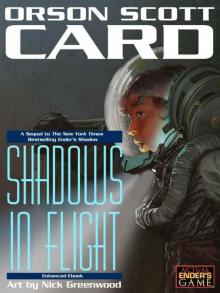 Shadows in Flight
Shadows in Flight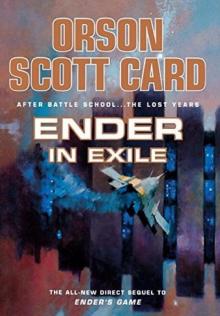 Ender in Exile
Ender in Exile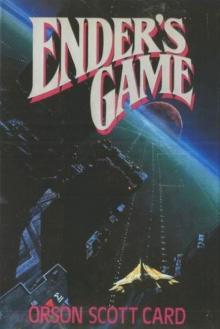 Ender's Game
Ender's Game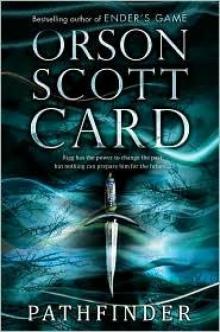 Pathfinder
Pathfinder Children of the Fleet
Children of the Fleet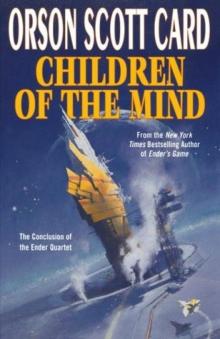 Children of the Mind
Children of the Mind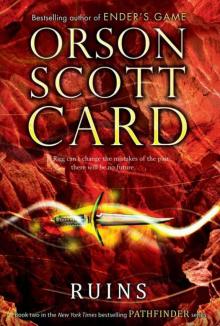 Ruins
Ruins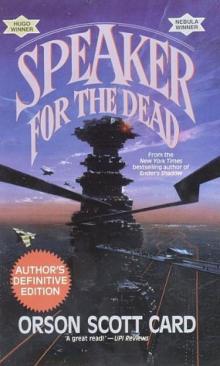 Speaker for the Dead
Speaker for the Dead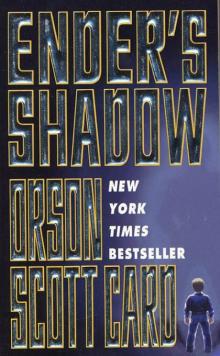 Ender's Shadow
Ender's Shadow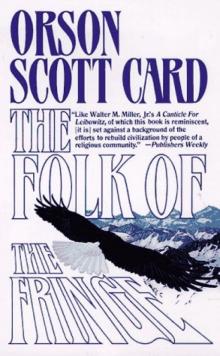 Folk of the Fringe
Folk of the Fringe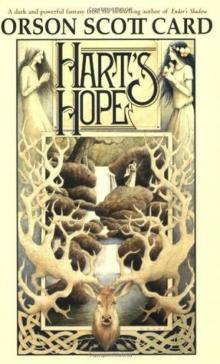 Hart's Hope
Hart's Hope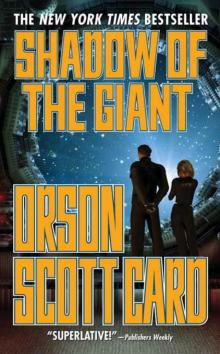 Shadow of the Giant
Shadow of the Giant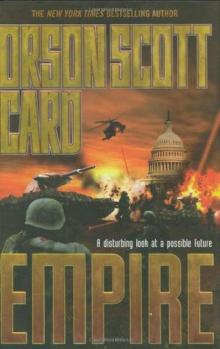 Empire
Empire Shadow Puppets
Shadow Puppets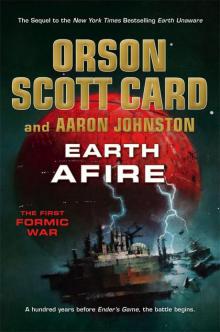 Earth Afire
Earth Afire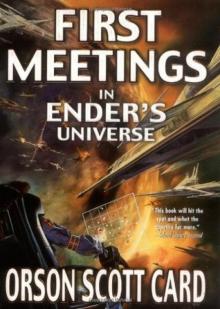 First Meetings in Ender's Universe
First Meetings in Ender's Universe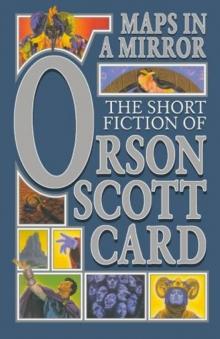 Maps in a Mirror: The Short Fiction of Orson Scott Card
Maps in a Mirror: The Short Fiction of Orson Scott Card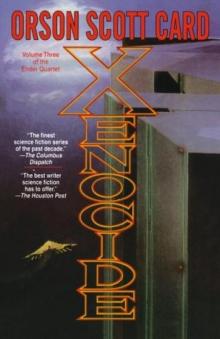 Xenocide
Xenocide The Swarm: The Second Formic War
The Swarm: The Second Formic War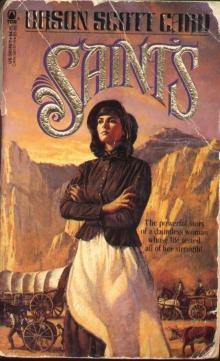 Saints
Saints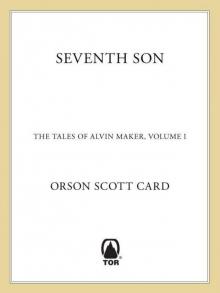 Seventh Son: The Tales of Alvin Maker, Volume I
Seventh Son: The Tales of Alvin Maker, Volume I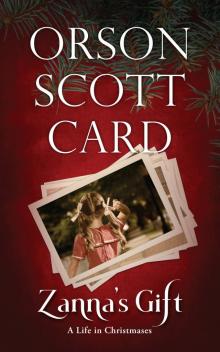 Zanna's Gift
Zanna's Gift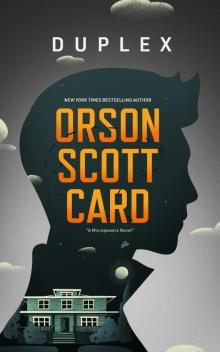 Duplex
Duplex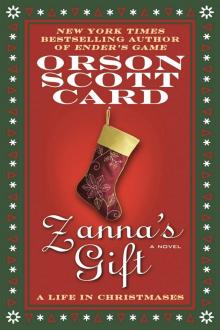 Zanna's Gift- a Life in Christmases
Zanna's Gift- a Life in Christmases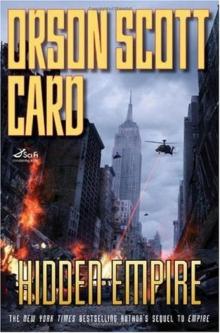 Hidden Empire
Hidden Empire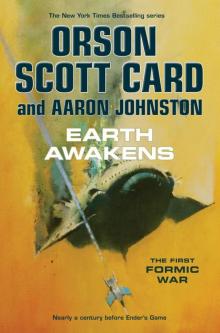 Earth Awakens
Earth Awakens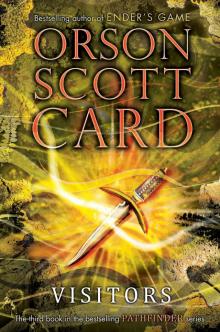 Visitors
Visitors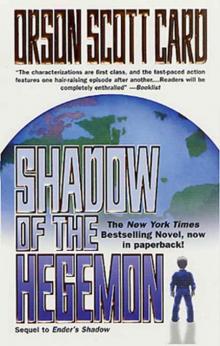 Shadow of the Hegemon
Shadow of the Hegemon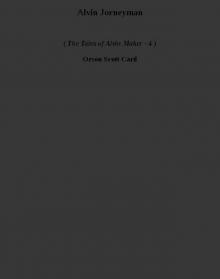 Alvin Jorneyman ttoam-4
Alvin Jorneyman ttoam-4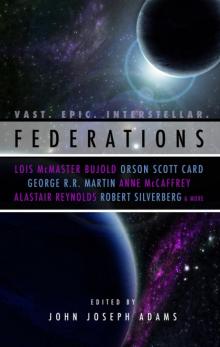 Federations
Federations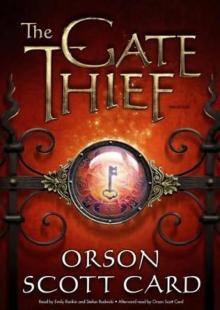 The Gate Thief mm-2
The Gate Thief mm-2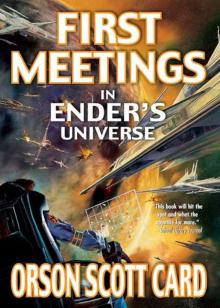 First Meetings
First Meetings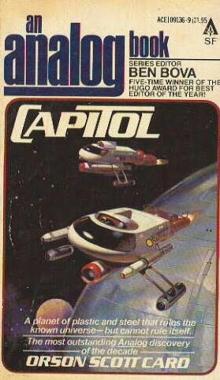 Capitol
Capitol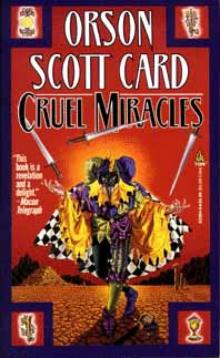 Cruel Miracles
Cruel Miracles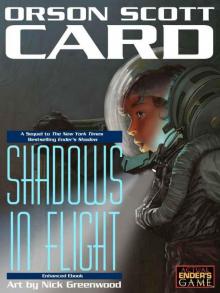 Shadows in Flight, enhanced edition
Shadows in Flight, enhanced edition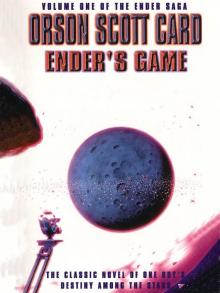 Ender's Game es-1
Ender's Game es-1 Ruins (Pathfinder Trilogy)
Ruins (Pathfinder Trilogy)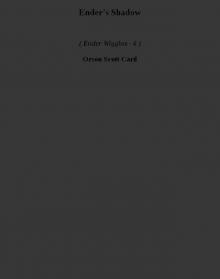 Ender's Shadow ew-6
Ender's Shadow ew-6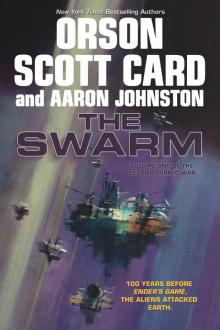 The Swarm
The Swarm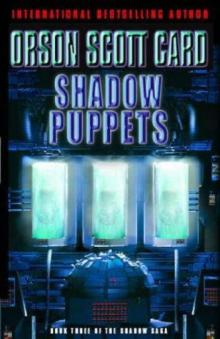 Card, Orson Scott - Ender's Saga 7 - Shadow Puppets
Card, Orson Scott - Ender's Saga 7 - Shadow Puppets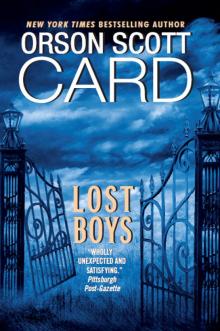 Lost Boys: A Novel
Lost Boys: A Novel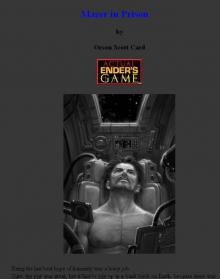 Mazer in Prison
Mazer in Prison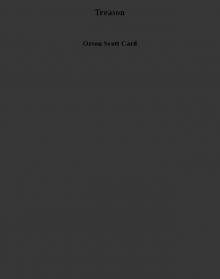 Treason
Treason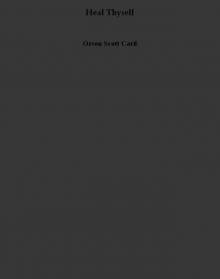 Heal Thyself
Heal Thyself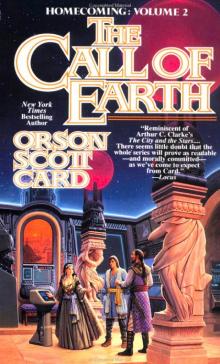 The Call of Earth
The Call of Earth Songmaster
Songmaster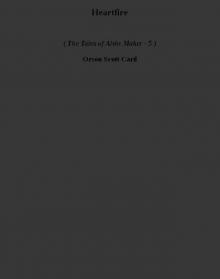 Heartfire ttoam-5
Heartfire ttoam-5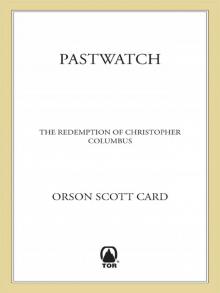 Pastwatch
Pastwatch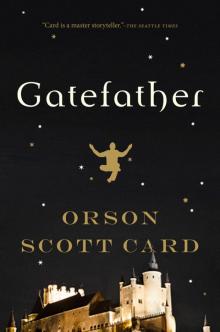 Gatefather
Gatefather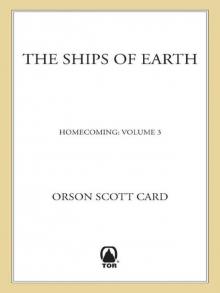 The Ships of Earth: Homecoming: Volume 3
The Ships of Earth: Homecoming: Volume 3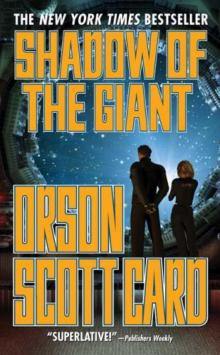 Orson Scott Card - Ender 08 - Shadow of the Giant
Orson Scott Card - Ender 08 - Shadow of the Giant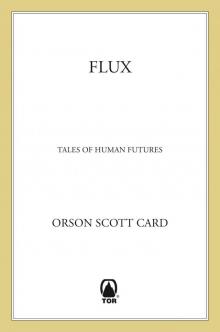 Flux
Flux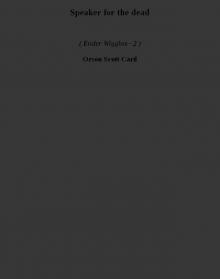 Speaker for the dead ew-2
Speaker for the dead ew-2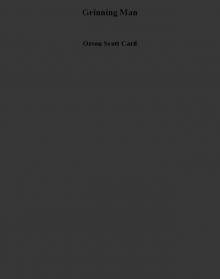 Grinning Man
Grinning Man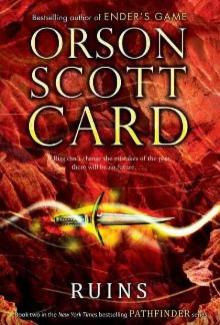 Ruins sw-2
Ruins sw-2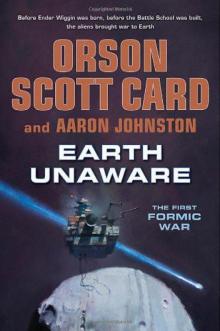 Earth Unaware
Earth Unaware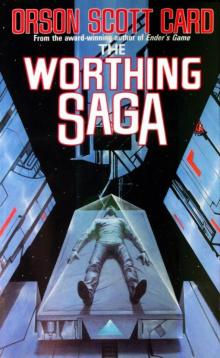 The Worthing Saga
The Worthing Saga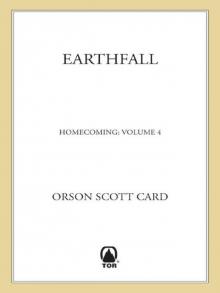 Earthfall (Homecoming)
Earthfall (Homecoming)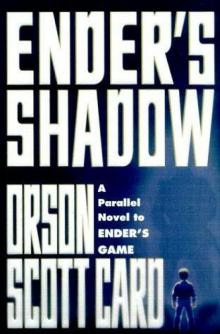 Card, Orson Scott - Ender's Saga 5 - Ender's Shadow
Card, Orson Scott - Ender's Saga 5 - Ender's Shadow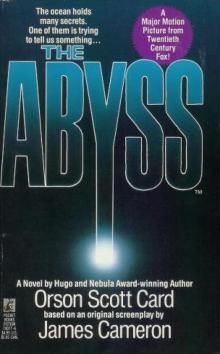 The Abyss
The Abyss Magic Street
Magic Street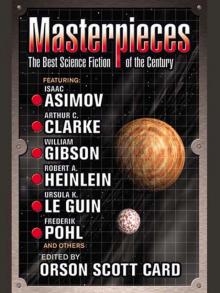 Masterpieces
Masterpieces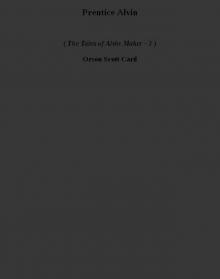 Prentice Alvin ttoam-3
Prentice Alvin ttoam-3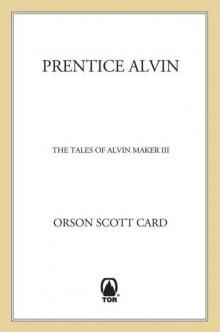 Prentice Alvin: The Tales of Alvin Maker, Volume III
Prentice Alvin: The Tales of Alvin Maker, Volume III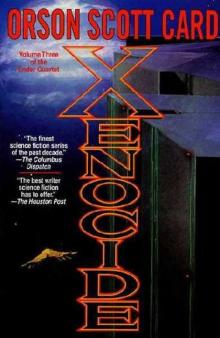 Card, Orson Scott - Ender's Saga 3 - Xenocide
Card, Orson Scott - Ender's Saga 3 - Xenocide Homeless in Hell
Homeless in Hell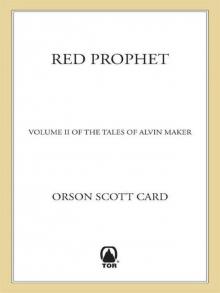 Red Prophet: The Tales of Alvin Maker, Volume II
Red Prophet: The Tales of Alvin Maker, Volume II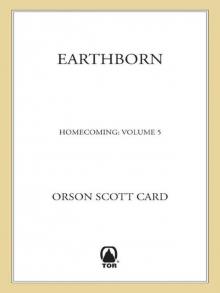 Earthborn (Homecoming)
Earthborn (Homecoming)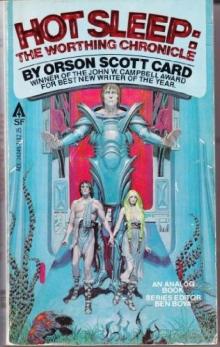 Hot Sleep
Hot Sleep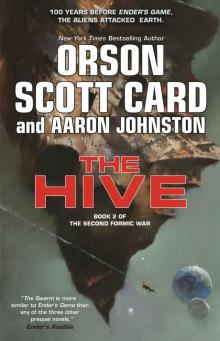 The Hive
The Hive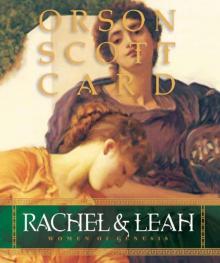 Rachel and Leah (Women of Genesis)
Rachel and Leah (Women of Genesis)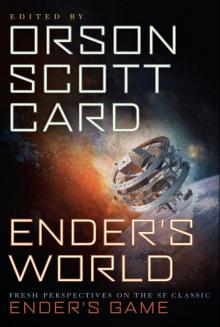 Ender's World
Ender's World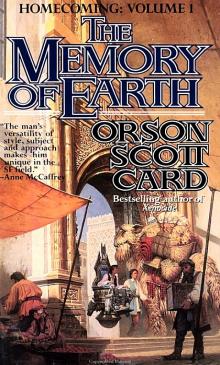 The Memory of Earth
The Memory of Earth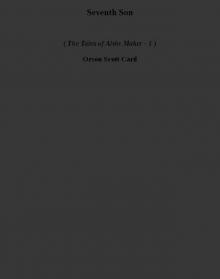 Seventh Son ttoam-1
Seventh Son ttoam-1 Wyrms
Wyrms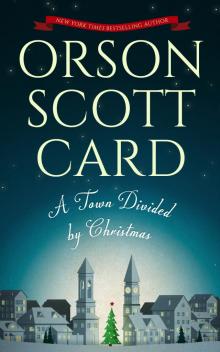 A Town Divided by Christmas
A Town Divided by Christmas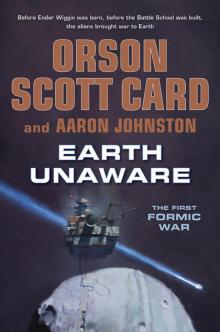 Earth unavare (the first formic war)
Earth unavare (the first formic war)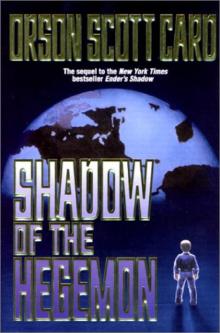 The Shadow of the Hegemon - Orson Scott Card
The Shadow of the Hegemon - Orson Scott Card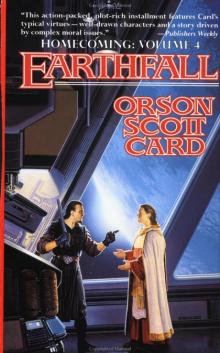 Earthfall
Earthfall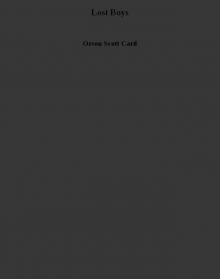 Lost Boys
Lost Boys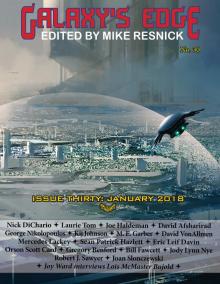 Galaxy's Edge Magazine
Galaxy's Edge Magazine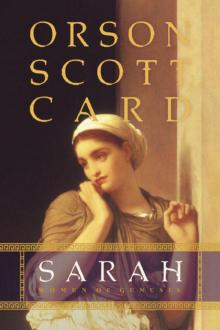 Sarah: Women of Genesis: 1 (Women of Genesis (Forge))
Sarah: Women of Genesis: 1 (Women of Genesis (Forge))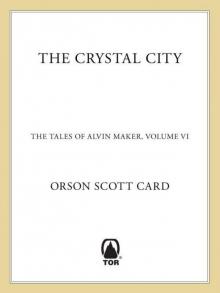 The Crystal City: The Tales of Alvin Maker, Volume VI
The Crystal City: The Tales of Alvin Maker, Volume VI Xenocide ew-4
Xenocide ew-4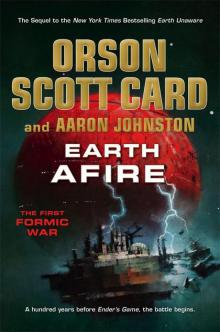 Earth Afire (The First Formic War)
Earth Afire (The First Formic War)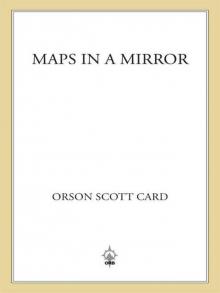 Maps in a Mirror
Maps in a Mirror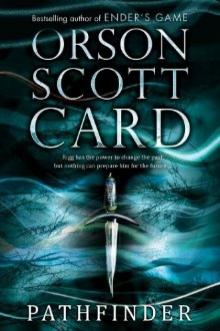 Pathfinder sw-1
Pathfinder sw-1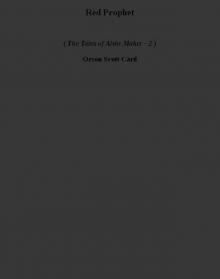 Red Prophet ttoam-2
Red Prophet ttoam-2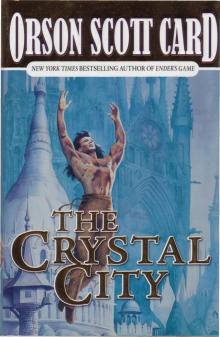 THE CRYSTAL CITY
THE CRYSTAL CITY 27 Short Stories
27 Short Stories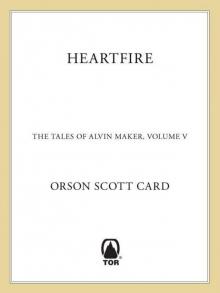 Heartfire: The Tales of Alvin Maker, Volume V
Heartfire: The Tales of Alvin Maker, Volume V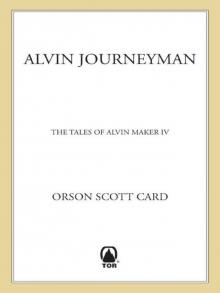 Alvin Journeyman: The Tales of Alvin Maker, Volume IV
Alvin Journeyman: The Tales of Alvin Maker, Volume IV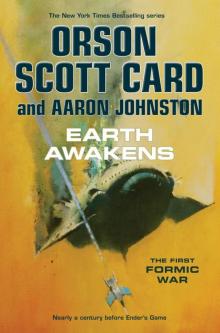 Earth Awakens (The First Formic War)
Earth Awakens (The First Formic War)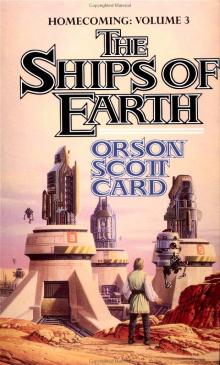 THE SHIPS OF EARTH
THE SHIPS OF EARTH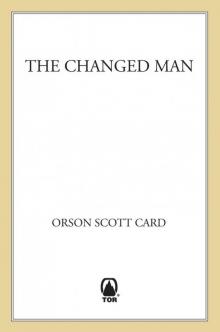 The Changed Man
The Changed Man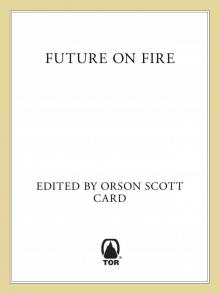 Future on Fire
Future on Fire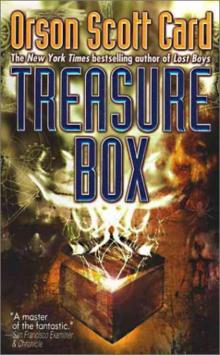 Treasure Box
Treasure Box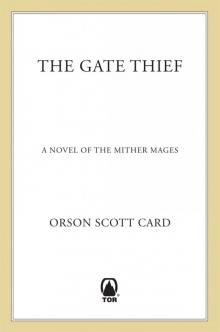 The Gate Thief
The Gate Thief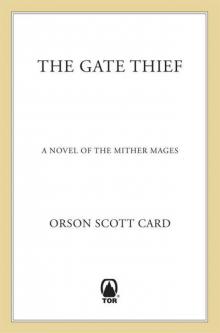 The Gate Thief (Mither Mages)
The Gate Thief (Mither Mages)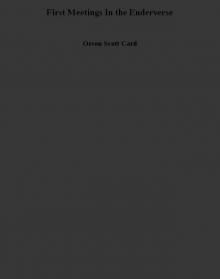 First Meetings In the Enderverse
First Meetings In the Enderverse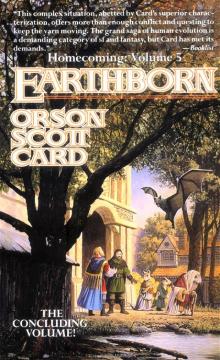 Earthborn
Earthborn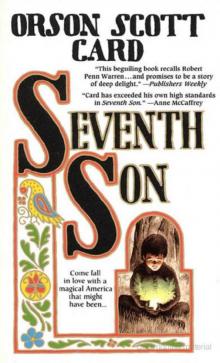 Seventh Son
Seventh Son Pastwatch: The Redemption Of Christopher Columbus
Pastwatch: The Redemption Of Christopher Columbus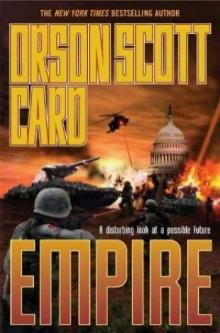 Empire e-1
Empire e-1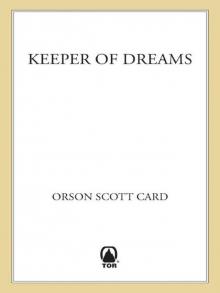 Keeper of Dreams
Keeper of Dreams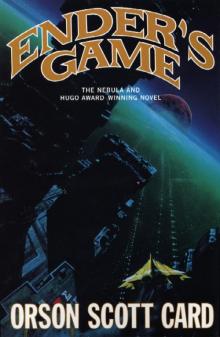 Card, Orson Scott - Ender's Saga 1 - Ender's Game
Card, Orson Scott - Ender's Saga 1 - Ender's Game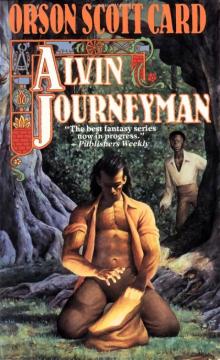 ALVIN JOURNEYMAN
ALVIN JOURNEYMAN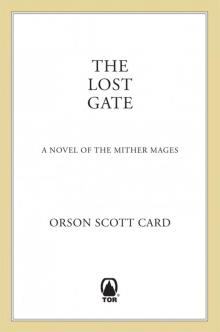 The Lost Gate
The Lost Gate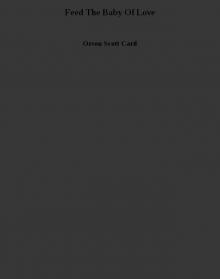 Feed The Baby Of Love
Feed The Baby Of Love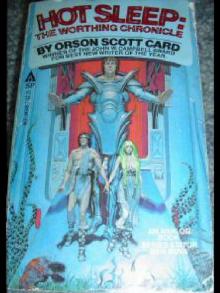 Hot Sleep: The Worthing Chronicle
Hot Sleep: The Worthing Chronicle